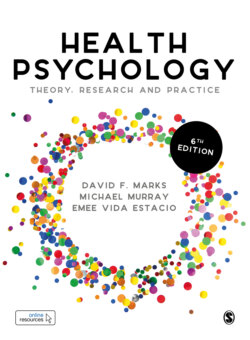Читать книгу Health Psychology - Michael Murray - Страница 147
На сайте Литреса книга снята с продажи.
Top-down versus Bottom-up Research Approaches
ОглавлениеA ‘top-down’ research approach is where an executive decision-maker, who may be a theorist, a research director or other influential person within an organization, makes decisions about the nature of a research programme that should be carried out, the objectives of the research, and the methodology, with or without the consultation of an advisory board. This executive decision requires the existence of suitable funding, for example from governmental and/or commercial sources. A hierarchical system with different levels of research personnel responds according to the requirements of the programme. In many instances, the research programme will be carried out across multiple institutions, which compete for the resources by demonstrating their excellence in their commitment to the research question and in their competence to carry it forward.
The top-down research approach mirrors the social hierarchy found in ancient Egypt, wherein the Pharaoh ruled over a hierarchy of social and occupational classes residing at various levels below (Figure 7.4).
A top-down research approach has been the predominant approach across universities, institutes and research organizations. The ‘Pharaoh’ is normally a leading theoretician, funding body, institute director or professor who sets the goals for the research, organizes the funding and appoints the principal investigators (PIs) who are responsible for implementing the research programme, including the methodology, defining the specific research questions, and selecting personnel qualified to organize recruitment of the participants (or ‘subjects’) and the data collection. In turn, the PIs are responsible for recruiting assistants to collect data and statisticians to analyse the data from participants, who are normally patients or college students, at the bottom of the research hierarchy. Expert paper writers may consist of the PIs themselves or be especially hired for their ability to write up the study in the most favourable light to the study hypotheses. The ‘Pharaoh’ rarely, if ever, interacts or communicates with anybody lower in the hierarchy than the PIs, especially the research participants. Typically, ‘Pharaohs’ prefer quantitative variables that are believed by him/her to be less prone to error and bias, but they may also opt for subjective, self-report measures, which are more prone to confirmation bias in a non-blinded trial (e.g., see White et al., 2011)
Figure 7.4 Top-down research approach
Some health psychologists, especially those who prefer qualitative methods, disagree with the top-down approach, which imposes a particular theoretical framework or mould on the research and the research participants. They argue that a formulaic, top-down approach tends to produce confirmation biases and group-thinking, which constrain creativity and innovation. Researchers who prefer the reverse approach, the so-called ‘bottom-up approach’ (please note that it is ‘bottom-up’ and NOT ‘bottoms up’, which is the kind of thing people say before downing a stiff drink!) tend to use an open-ended approach using qualitative or mixed methods data to learn about the thoughts, feelings and lived experiences of the research participants to produce a set of findings that are out of the mould. They argue that the voices of patients are crucially important in the production of new theories and therapies.
